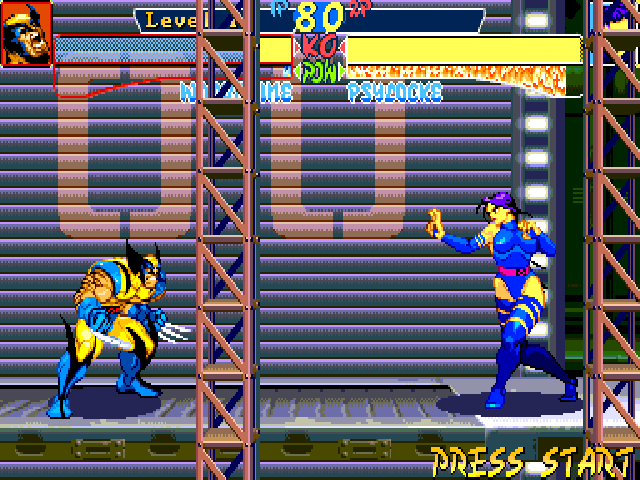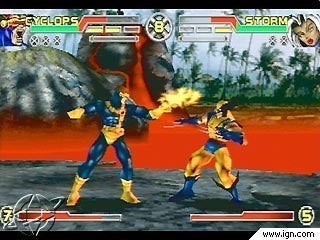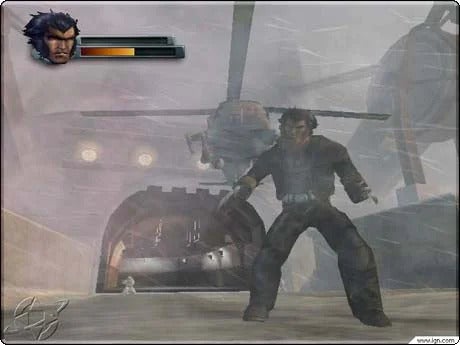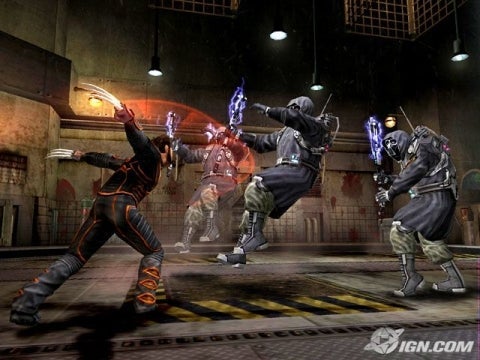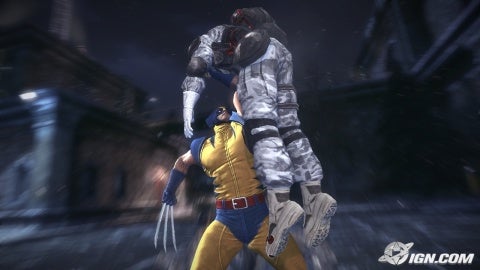If there’s any Marvel hero who can challenge Deadpool or Spider-Man in the popularity department these days, it’s Wolverine. That’s why it’s fitting that the ol’ Canucklehead is joining Spidey in getting a big-budget action game from the folks at Insomniac.
That's right -- things are looking up for Wolverine in games and movies again. Aside from the Insomniac Wolvie game that's in the works, Hugh Jackman is also returning to the character, joining Ryan Reynolds for Deadpool & Wolverine, which will finally properly unite the two heroes. In the MCU to boot! We just got our first official trailer for Deadpool 3 during the Super Bowl, and man, are we excited.
Wolverine has a fascinating history in the video game realm. It took years for developers to figure out how to translate both his distinctive look and his unique powers from page to screen. Let’s take a look back at Wolverine’s clawful evolution in video games.
The X-Men may have been around since 1963, but it would be decades before they grew to become Marvel’s dominant franchise (thanks in no small part to Wolverine himself). The franchise didn’t appear in video game form until 1989’s Uncanny X-Men on the NES. We suspect many fans wish they hadn’t, as this is generally regarded to be one of the worst superhero games ever made.
Wolverine himself was spun out into his own NES game in 1991. This overhead action game earned equally scathing reviews, and it embodies many of the problems developers faced in trying to accurately depict the hero. The iconic Marc Silvestri cover art is a far cry from the generic, pixelated blob gamers actually control. The game’s biggest sin is tying Wolverine’s trademark claws to his health meter, forcing gamers to hunt down hamburgers and soda to replenish his steadily depleting energy. That would become an unfortunate trope in many early X-Men games.
In this early period, it would fall on Konami to give gamers a taste of what a good X-Men game looks like. Konami’s X-Men arcade game follows the same beat-em-up formula as classics like The Simpsons and TMNT. It’s based on the animated pilot Pryde of the X-Men, so it features Wolverine in the classic brown costume he wore throughout the 1980’s. It was visually a huge leap from its X-Men predecessors, with colorful, large sprites that channeled the energy of the early ‘90s comics. Sadly, it still made the mistake of limiting how often players could tap into each character’s mutant power. That would continue to be a trend for a while to come.
The early to mid ‘90s marked a golden age of X-Men games, though perhaps more in quantity than quality. 1992’s multiplatform title Spider-Man and the X-Men in Arcade’s Revenge set the tone for this era, offering fans a side-scrolling action gameplay that looked and sounded better than it actually played.
1993’s X-Men on the Sega Genesis might be the most popular game from this era. The game’s sharp, colorful look and killer soundtrack appealed to fans, even if the generic and often frustrating gameplay didn’t. The Genesis game is also notable for being the first to feature Wolverine’s classic yellow and black costume, which was back in vogue at the time thanks to both Jim Lee’s X-Men comics and X-Men: The Animated Series.
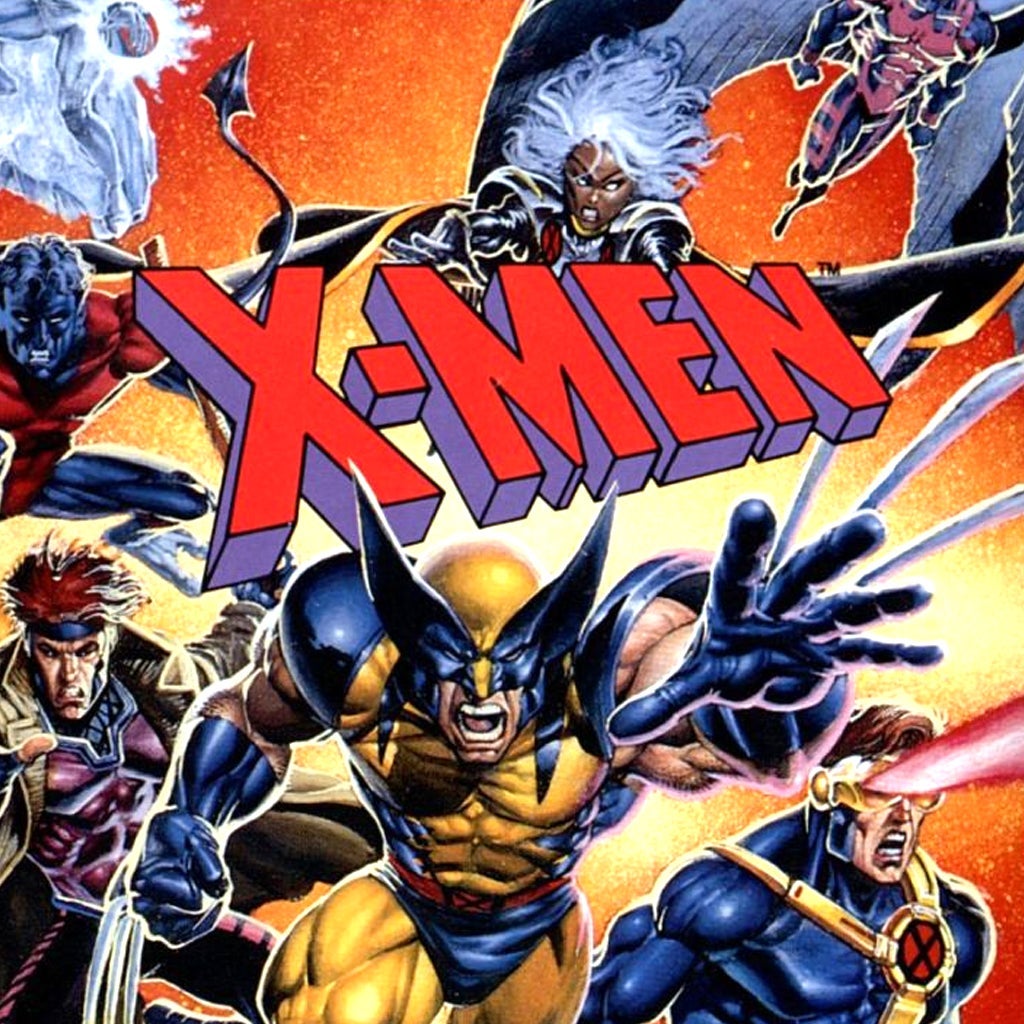
Sadly, the Genesis game was also guilty of that fundamental Wolverine faux pas - limiting how much players could unleash his adamantium claws.
The Super Nintendo, meanwhile, got its own mutant adventure in 1994’s X-Men: Mutant Apocalypse. This game also took its visual cues straight from the contemporary X-Men comics, including a roster of playable characters pulled from the monthly X-Men series. It was an early taste of things to come from developer Capcom.
Wolverine finally got a chance to fly solo again in 1994’s Wolverine: Adamantium Rage. Our hero’s yellow costume was again on display, with the SNES version doing an especially good job of adapting the dynamic, colorful look of the comics. While it debuted to mixed reviews, Adamantium Rage did a better job than most of tapping into Wolverine’s mutant abilities. It even included his healing factor in the form of a regenerating health meter. The catch, however, is that stopping and waiting too long would result in the android Elsie Dee showing up and killing Wolverine herself.
If Konami’s X-Men arcade game gave fans a glimpse of what the franchise could look like with powerful hardware behind it, Capcom blew the doors down with 1994’s X-Men: Children of the Atom. While basically a Street Fighter clone with a playable cast of mutant heroes and villains, the game immediately won a fan following thanks to its dynamic visuals and over-the-top special moves.
The large, detailed sprites in Children of the Atom became the new gold standard for X-Men games, merging the style of the early ‘90s X-Men comics with a more stylized, manga-esque approach. In that sense, the game’s graphics mirrored the trend of the comics themselves, with up-and-coming artists like Joe Madureira bringing a heavy manga influence to the American comics scene.
Children of the Atom also featured many voice actors from X-Men: The Animated Series, including Cal Dodd as Wolverine. The result was a best of all worlds approach, where Wolverine finally looked as good as he sounded.
Children of the Atom and various follow-ups like X-Men vs. Street Fighter and Marvel vs. Capcom also showed fans a Wolverine completely unleashed, with no limitations on his deadly fighting abilities. If anything, Wolverine was so badly overpowered in X-Men vs. Street Fighter that he had to be nerfed for Marvel vs. Capcom 2.
While you couldn’t play as Wolverine in every level, at least you weren’t limited in how often you could unsheathe his claws.
Wolverine would make one final appearance on the SNES in 1995’s Marvel Super Heroes: War of the Gems. Here, Capcom repurposed the eye-popping sprites from the fighting games to create a more traditional side-scrolling action game. While you couldn’t play as Wolverine in every level, at least you weren’t limited in how often you could unsheathe his claws.
With the X-Men arcade games nailing the look of the Marvel Universe in 2D form, the next challenge was translating that look to 3D. It wasn’t easy.
First up was X-Men: The Ravages of Apocalypse, which was essentially a mod of the original Quake released as a retail game. While the game boasted a wider color palette than Quake ever did, the crudely animated, blocky character models didn’t exactly scream “X-Men.” It didn’t help that the single player mode had gamers control a generic grunt mowing down endless waves of X-Men clones, rather than controlling Wolverine and friends directly.
Things went quiet on the Wolverine front for a few years, but the arrival of the first X-Men movie helped reinvigorate the franchise’s gaming prospects. 2000’s X-Men: Mutant Academy became the first 3D X-Men fighting game, and naturally, Wolverine was one of the playable fighters. Considering the limitations of the aging Playstation hardware, the game did a reasonable job of replicating the look and feel of the late-’90s X-Men comics. Dodd even returned to voice Wolverine again.
Mutant Academy spawned a direct sequel on the Playstation 1, as well as a more ambitious followup called X-Men: Next Dimension on the Playstation 2, Gamecube and Xbox. Next Dimension offered fans an unusual blend of comic and movie-inspired elements. Rather than feature the X-Men in their traditional spandex costumes, the game opted for the modern black leather uniforms introduced in the comic book series New X-Men. Patrick Stewart also narrated the game’s story mode, though the plot itself was set within Marvel’s comic book universe.
That same hybrid approach carried over to Wolverine’s next solo game in 2003. Titled X2: Wolverine’s Revenge, the game was clearly intended to lure in moviegoers fresh out of seeing X2: X-Men United. But despite Hugh Jackman’s face on the cover, the game was mostly comic-inspired (apart from again bringing in Patrick Stewart as Professor X). Wolverine once again wears his black leather New X-Men uniform, and Luke Skywalker himself, Mark Hamill, provided the hero’s voice.
Wolverine’s Revenge didn’t entirely succeed in putting gamers in Wolverine’s boots, sadly. The punishing difficulty, combined with a strange reliance on stealth mechanics over hacking and slashing, made them feel like anything but an immortal superhero. Wolverine’s hunched, animalistic animations may have looked great for the time, but the controls left much to be desired.
Wolverine’s Revenge didn’t entirely succeed in putting gamers in Wolverine’s boots, sadly.
For many X-Men fans, the franchise hit its gaming peak with 2004’s X-Men Legends. This action RPG allowed players to control a team of four heroes, battling the Brotherhood and leveling up.
Visually, two elements set legends apart from the crowd. The game drew inspiration from Marvel’s Ultimate X-Men comic rather than the traditional X-books, meaning the X-Men were decked out in sleek, modern black and gold costumes. The characters were also cel-shaded, echoing the comic book-inspired approach of the Ultimate Spider-Man game. Wolverine himself was voiced by Steve Blum, who would go on to reprise the role in the animated series Wolverine and the X-Men.
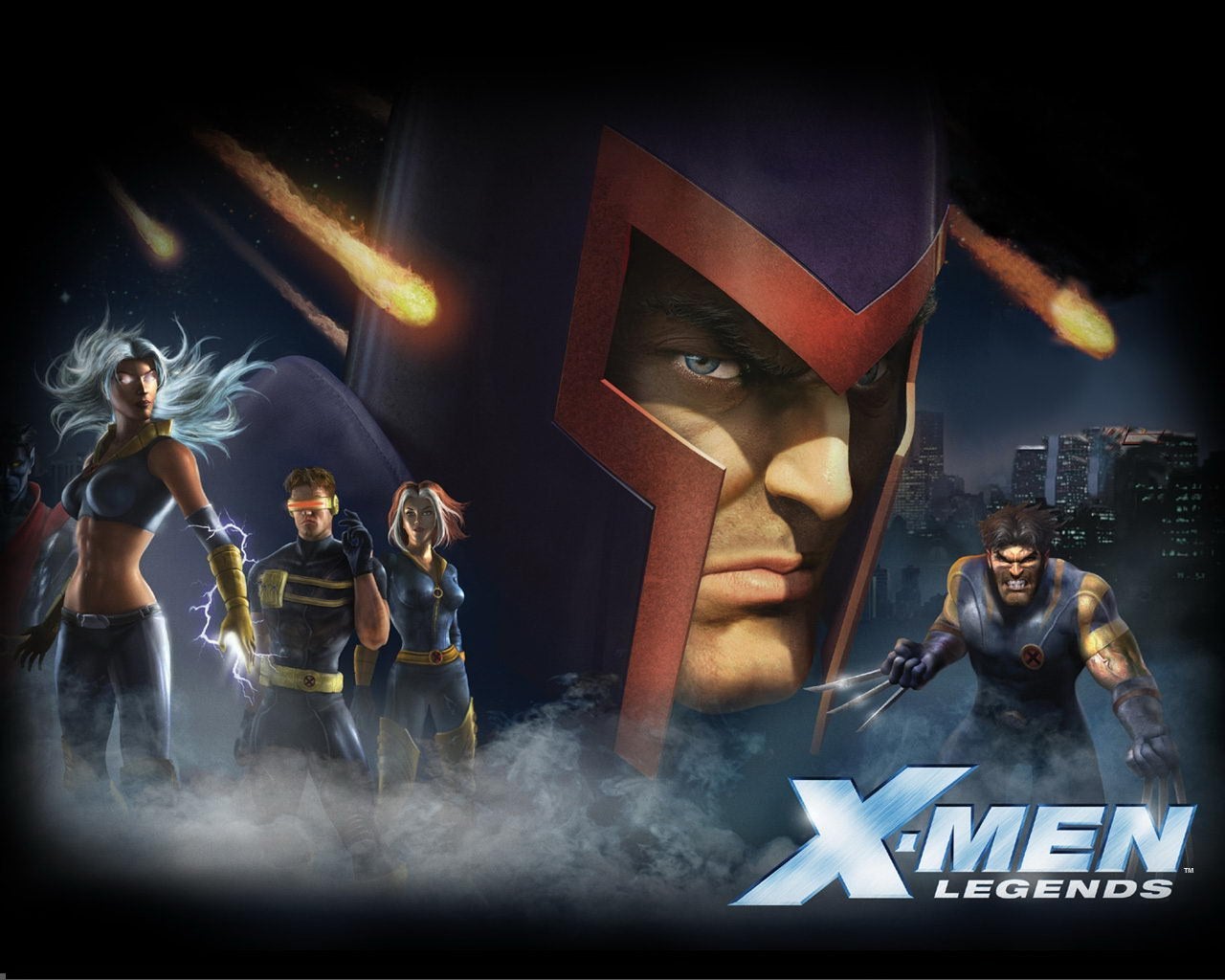
Legends also did a better job than most of its predecessors when it came to making players actually feel like Wolverine. Gone were the simplistic platforming elements and special claw meters, replaced by a wide array of moves that could be upgraded over time.
Legends inspired a direct sequel in 2005’s X-Men Legends II: The Rise of Apocalypse. The franchise then expanded to encompass the wider Marvel Universe in 2006’s Marvel Ultimate Alliance. Ultimate Alliance abandoned the cel-shaded look in favor of a more realistic art style still heavily inspired by the Ultimate Universe comics. Its sequel veered in a different direction, with more traditional comic book designs.
Surprisingly, it wasn’t until 2006 that gamers were treated to an X-Men game based specifically on the movie series. X-Men: The Official Game acted as a prequel to X-Men: The Last Stand, with the story mode introducing villains like Silver Samurai and the Sentinels and explaining why Nightcrawler suddenly vanished after X2.
Naturally, the game featured both the voice and likeness of Hugh Jackman, along with several other movie mainstays. The game also made some notable attempts at depicting Wolverine’s powers, including a regenerating health meter and a berserker rage mode that activates whenever Wolverine takes too much damage.
That game wound up serving as a rough prototype for Wolverine’s next - and easily best - solo game. 2009’s X-Men Origins: Wolverine served as an adaptation of the movie, albeit with a greatly expanded plot that added in major characters and subplots.
More importantly, X-Men Origins: Wolverine finally hit on the perfect formula for making players feel like Wolverine. The ferocious combat was heavily inspired by God of War, taking full advantage of Logan’s unbreakable claws and healing factor and ensuring players were never limited in how often they used them. Thanks to the processing power of the Xbox 360 and Playstation 3, players could even see Wolverine’s battered body deform and tear apart in real time.
While the main character model in X-Men Origins is based directly on Jackman, the game also included several alternate costumes drawn directly from the comics. If not for Deadpool & Wolverine, this might have been the clsoest we ever got to seeing Jackman don the classic comic book costume.
X-Men Origins: Wolverine finally hit on the perfect formula for making players feel like Wolverine.
Sadly, X-Men Origins: Wolverine sets up a sequel Activision never delivered, and things have been fairly quiet on the X-Men front in recent years. Unless you count Silicon Knights’ disastrous 2011 game X-Men: Destiny, and we’d rather not.
Wolverine has appeared in a number of Marvel games following his last solo outing, often voiced by Steve Blum. 2011’s Marvel vs Capcom 3 and 2019’s Marvel Ultimate Alliance 3 both stand out because of their attempts to pair detailed, modern graphics with a comic book aesthetic. While not strictly cel-shaded, the art styles in both games emphasize heavy black lines and shadows. The now-defunct online RPG Marvel Heroes also deserves a nod thanks to its sheer number of alternate costumes available for Wolverine and his fellow heroes.
But if things have gone quiet on the X-Men front of late, Wolverine himself is due for a big comeback. He’s set to return in Marvel’s Wolverine, a Playstation 5-exclusive action game developed by Insomniac. We don’t know much about the scope of the game just yet, but the teaser trailer showcases a gritty, blood-soaked version of Wolverine enjoying himself in a seedy Madripoor bar. If Marvel’s Spider-Man is any indication, we can probably expect a brand new interpretation of Wolverine’s classic costume alongside dozens of familiar suits.
Which of Wolverine’s many video game appearances is your favorite? What costumes do you want to see in Marvel’s Wolverine? Claw your way down to the comments and let us know, bub.
For more Wolverine fun, find out how Deadpool & Wolverine is setting up Avengers: Secret Wars and see what to expect from Marvel in 2024.
Jesse is a mild-mannered staff writer for IGN. Allow him to lend a machete to your intellectual thicket by following @jschedeen on Twitter.
Continue reading...
That's right -- things are looking up for Wolverine in games and movies again. Aside from the Insomniac Wolvie game that's in the works, Hugh Jackman is also returning to the character, joining Ryan Reynolds for Deadpool & Wolverine, which will finally properly unite the two heroes. In the MCU to boot! We just got our first official trailer for Deadpool 3 during the Super Bowl, and man, are we excited.
Wolverine has a fascinating history in the video game realm. It took years for developers to figure out how to translate both his distinctive look and his unique powers from page to screen. Let’s take a look back at Wolverine’s clawful evolution in video games.
The Early X-Men Games
The X-Men may have been around since 1963, but it would be decades before they grew to become Marvel’s dominant franchise (thanks in no small part to Wolverine himself). The franchise didn’t appear in video game form until 1989’s Uncanny X-Men on the NES. We suspect many fans wish they hadn’t, as this is generally regarded to be one of the worst superhero games ever made.
Wolverine himself was spun out into his own NES game in 1991. This overhead action game earned equally scathing reviews, and it embodies many of the problems developers faced in trying to accurately depict the hero. The iconic Marc Silvestri cover art is a far cry from the generic, pixelated blob gamers actually control. The game’s biggest sin is tying Wolverine’s trademark claws to his health meter, forcing gamers to hunt down hamburgers and soda to replenish his steadily depleting energy. That would become an unfortunate trope in many early X-Men games.
In this early period, it would fall on Konami to give gamers a taste of what a good X-Men game looks like. Konami’s X-Men arcade game follows the same beat-em-up formula as classics like The Simpsons and TMNT. It’s based on the animated pilot Pryde of the X-Men, so it features Wolverine in the classic brown costume he wore throughout the 1980’s. It was visually a huge leap from its X-Men predecessors, with colorful, large sprites that channeled the energy of the early ‘90s comics. Sadly, it still made the mistake of limiting how often players could tap into each character’s mutant power. That would continue to be a trend for a while to come.
The 16-Bit Era
The early to mid ‘90s marked a golden age of X-Men games, though perhaps more in quantity than quality. 1992’s multiplatform title Spider-Man and the X-Men in Arcade’s Revenge set the tone for this era, offering fans a side-scrolling action gameplay that looked and sounded better than it actually played.
1993’s X-Men on the Sega Genesis might be the most popular game from this era. The game’s sharp, colorful look and killer soundtrack appealed to fans, even if the generic and often frustrating gameplay didn’t. The Genesis game is also notable for being the first to feature Wolverine’s classic yellow and black costume, which was back in vogue at the time thanks to both Jim Lee’s X-Men comics and X-Men: The Animated Series.

Sadly, the Genesis game was also guilty of that fundamental Wolverine faux pas - limiting how much players could unleash his adamantium claws.
The Super Nintendo, meanwhile, got its own mutant adventure in 1994’s X-Men: Mutant Apocalypse. This game also took its visual cues straight from the contemporary X-Men comics, including a roster of playable characters pulled from the monthly X-Men series. It was an early taste of things to come from developer Capcom.
Wolverine finally got a chance to fly solo again in 1994’s Wolverine: Adamantium Rage. Our hero’s yellow costume was again on display, with the SNES version doing an especially good job of adapting the dynamic, colorful look of the comics. While it debuted to mixed reviews, Adamantium Rage did a better job than most of tapping into Wolverine’s mutant abilities. It even included his healing factor in the form of a regenerating health meter. The catch, however, is that stopping and waiting too long would result in the android Elsie Dee showing up and killing Wolverine herself.
Capcom’s Berserker Barrage
If Konami’s X-Men arcade game gave fans a glimpse of what the franchise could look like with powerful hardware behind it, Capcom blew the doors down with 1994’s X-Men: Children of the Atom. While basically a Street Fighter clone with a playable cast of mutant heroes and villains, the game immediately won a fan following thanks to its dynamic visuals and over-the-top special moves.
The large, detailed sprites in Children of the Atom became the new gold standard for X-Men games, merging the style of the early ‘90s X-Men comics with a more stylized, manga-esque approach. In that sense, the game’s graphics mirrored the trend of the comics themselves, with up-and-coming artists like Joe Madureira bringing a heavy manga influence to the American comics scene.
Children of the Atom also featured many voice actors from X-Men: The Animated Series, including Cal Dodd as Wolverine. The result was a best of all worlds approach, where Wolverine finally looked as good as he sounded.
Children of the Atom and various follow-ups like X-Men vs. Street Fighter and Marvel vs. Capcom also showed fans a Wolverine completely unleashed, with no limitations on his deadly fighting abilities. If anything, Wolverine was so badly overpowered in X-Men vs. Street Fighter that he had to be nerfed for Marvel vs. Capcom 2.
While you couldn’t play as Wolverine in every level, at least you weren’t limited in how often you could unsheathe his claws.
Wolverine would make one final appearance on the SNES in 1995’s Marvel Super Heroes: War of the Gems. Here, Capcom repurposed the eye-popping sprites from the fighting games to create a more traditional side-scrolling action game. While you couldn’t play as Wolverine in every level, at least you weren’t limited in how often you could unsheathe his claws.
The X-Men Go 3D
With the X-Men arcade games nailing the look of the Marvel Universe in 2D form, the next challenge was translating that look to 3D. It wasn’t easy.
First up was X-Men: The Ravages of Apocalypse, which was essentially a mod of the original Quake released as a retail game. While the game boasted a wider color palette than Quake ever did, the crudely animated, blocky character models didn’t exactly scream “X-Men.” It didn’t help that the single player mode had gamers control a generic grunt mowing down endless waves of X-Men clones, rather than controlling Wolverine and friends directly.
Things went quiet on the Wolverine front for a few years, but the arrival of the first X-Men movie helped reinvigorate the franchise’s gaming prospects. 2000’s X-Men: Mutant Academy became the first 3D X-Men fighting game, and naturally, Wolverine was one of the playable fighters. Considering the limitations of the aging Playstation hardware, the game did a reasonable job of replicating the look and feel of the late-’90s X-Men comics. Dodd even returned to voice Wolverine again.
Mutant Academy spawned a direct sequel on the Playstation 1, as well as a more ambitious followup called X-Men: Next Dimension on the Playstation 2, Gamecube and Xbox. Next Dimension offered fans an unusual blend of comic and movie-inspired elements. Rather than feature the X-Men in their traditional spandex costumes, the game opted for the modern black leather uniforms introduced in the comic book series New X-Men. Patrick Stewart also narrated the game’s story mode, though the plot itself was set within Marvel’s comic book universe.
That same hybrid approach carried over to Wolverine’s next solo game in 2003. Titled X2: Wolverine’s Revenge, the game was clearly intended to lure in moviegoers fresh out of seeing X2: X-Men United. But despite Hugh Jackman’s face on the cover, the game was mostly comic-inspired (apart from again bringing in Patrick Stewart as Professor X). Wolverine once again wears his black leather New X-Men uniform, and Luke Skywalker himself, Mark Hamill, provided the hero’s voice.
Wolverine’s Revenge didn’t entirely succeed in putting gamers in Wolverine’s boots, sadly. The punishing difficulty, combined with a strange reliance on stealth mechanics over hacking and slashing, made them feel like anything but an immortal superhero. Wolverine’s hunched, animalistic animations may have looked great for the time, but the controls left much to be desired.
Wolverine’s Revenge didn’t entirely succeed in putting gamers in Wolverine’s boots, sadly.
The Rise of X-Men Legends
For many X-Men fans, the franchise hit its gaming peak with 2004’s X-Men Legends. This action RPG allowed players to control a team of four heroes, battling the Brotherhood and leveling up.
Visually, two elements set legends apart from the crowd. The game drew inspiration from Marvel’s Ultimate X-Men comic rather than the traditional X-books, meaning the X-Men were decked out in sleek, modern black and gold costumes. The characters were also cel-shaded, echoing the comic book-inspired approach of the Ultimate Spider-Man game. Wolverine himself was voiced by Steve Blum, who would go on to reprise the role in the animated series Wolverine and the X-Men.

Legends also did a better job than most of its predecessors when it came to making players actually feel like Wolverine. Gone were the simplistic platforming elements and special claw meters, replaced by a wide array of moves that could be upgraded over time.
Legends inspired a direct sequel in 2005’s X-Men Legends II: The Rise of Apocalypse. The franchise then expanded to encompass the wider Marvel Universe in 2006’s Marvel Ultimate Alliance. Ultimate Alliance abandoned the cel-shaded look in favor of a more realistic art style still heavily inspired by the Ultimate Universe comics. Its sequel veered in a different direction, with more traditional comic book designs.
Wolverine’s Movie Adventures
Surprisingly, it wasn’t until 2006 that gamers were treated to an X-Men game based specifically on the movie series. X-Men: The Official Game acted as a prequel to X-Men: The Last Stand, with the story mode introducing villains like Silver Samurai and the Sentinels and explaining why Nightcrawler suddenly vanished after X2.
Naturally, the game featured both the voice and likeness of Hugh Jackman, along with several other movie mainstays. The game also made some notable attempts at depicting Wolverine’s powers, including a regenerating health meter and a berserker rage mode that activates whenever Wolverine takes too much damage.
That game wound up serving as a rough prototype for Wolverine’s next - and easily best - solo game. 2009’s X-Men Origins: Wolverine served as an adaptation of the movie, albeit with a greatly expanded plot that added in major characters and subplots.
More importantly, X-Men Origins: Wolverine finally hit on the perfect formula for making players feel like Wolverine. The ferocious combat was heavily inspired by God of War, taking full advantage of Logan’s unbreakable claws and healing factor and ensuring players were never limited in how often they used them. Thanks to the processing power of the Xbox 360 and Playstation 3, players could even see Wolverine’s battered body deform and tear apart in real time.
While the main character model in X-Men Origins is based directly on Jackman, the game also included several alternate costumes drawn directly from the comics. If not for Deadpool & Wolverine, this might have been the clsoest we ever got to seeing Jackman don the classic comic book costume.
X-Men Origins: Wolverine finally hit on the perfect formula for making players feel like Wolverine.
The Modern Wolverine Games
Sadly, X-Men Origins: Wolverine sets up a sequel Activision never delivered, and things have been fairly quiet on the X-Men front in recent years. Unless you count Silicon Knights’ disastrous 2011 game X-Men: Destiny, and we’d rather not.
Wolverine has appeared in a number of Marvel games following his last solo outing, often voiced by Steve Blum. 2011’s Marvel vs Capcom 3 and 2019’s Marvel Ultimate Alliance 3 both stand out because of their attempts to pair detailed, modern graphics with a comic book aesthetic. While not strictly cel-shaded, the art styles in both games emphasize heavy black lines and shadows. The now-defunct online RPG Marvel Heroes also deserves a nod thanks to its sheer number of alternate costumes available for Wolverine and his fellow heroes.
But if things have gone quiet on the X-Men front of late, Wolverine himself is due for a big comeback. He’s set to return in Marvel’s Wolverine, a Playstation 5-exclusive action game developed by Insomniac. We don’t know much about the scope of the game just yet, but the teaser trailer showcases a gritty, blood-soaked version of Wolverine enjoying himself in a seedy Madripoor bar. If Marvel’s Spider-Man is any indication, we can probably expect a brand new interpretation of Wolverine’s classic costume alongside dozens of familiar suits.
Which of Wolverine’s many video game appearances is your favorite? What costumes do you want to see in Marvel’s Wolverine? Claw your way down to the comments and let us know, bub.
For more Wolverine fun, find out how Deadpool & Wolverine is setting up Avengers: Secret Wars and see what to expect from Marvel in 2024.
Jesse is a mild-mannered staff writer for IGN. Allow him to lend a machete to your intellectual thicket by following @jschedeen on Twitter.
Continue reading...



